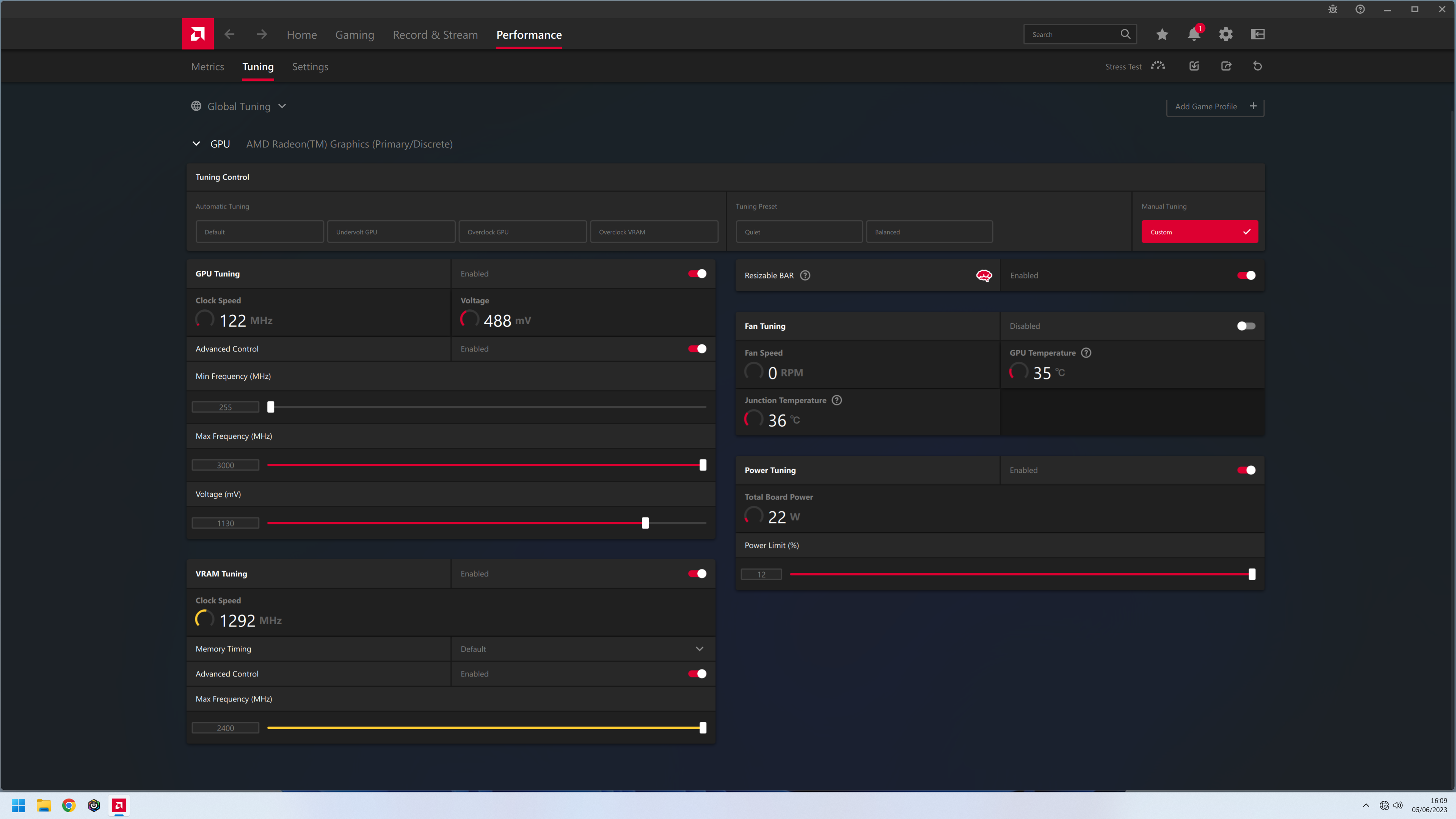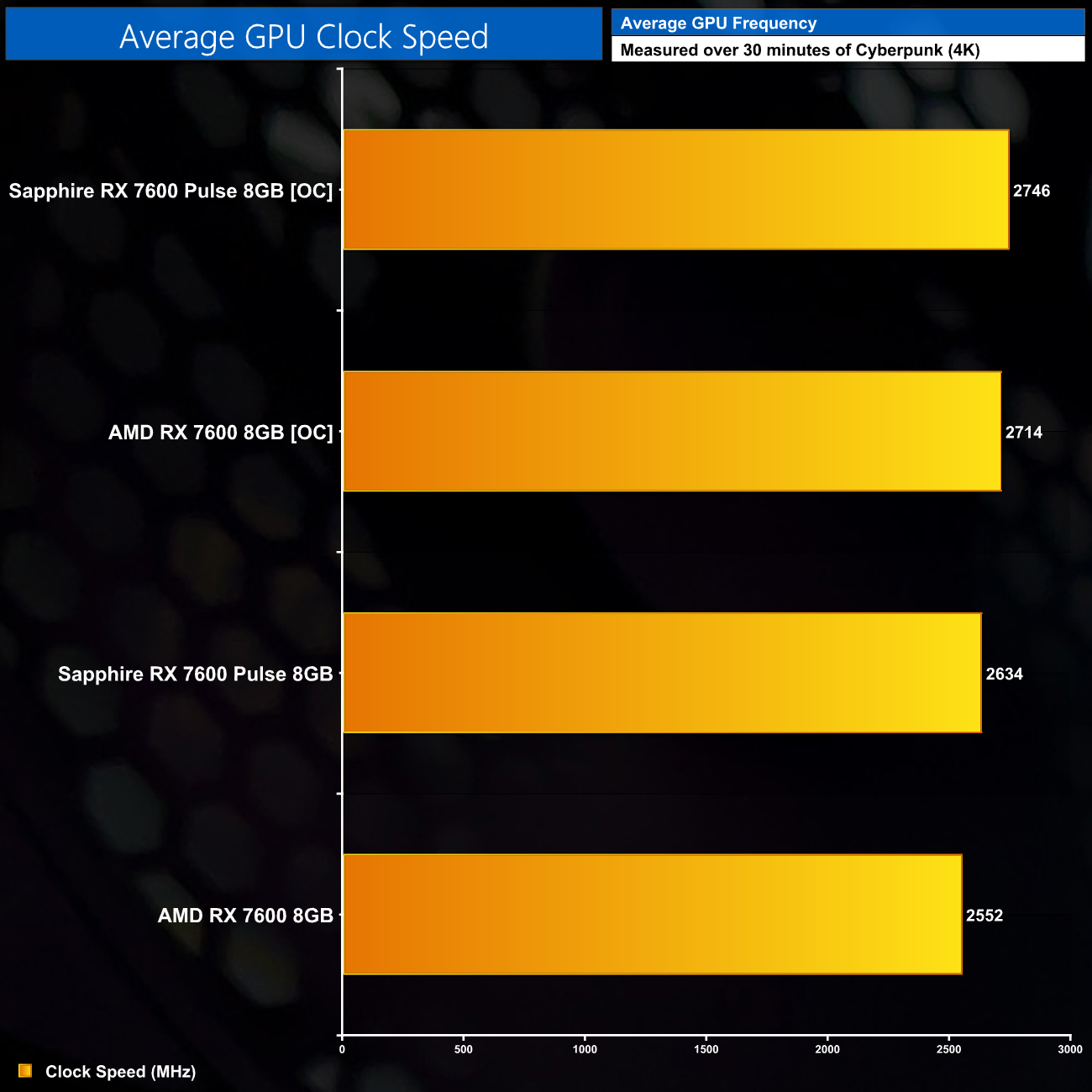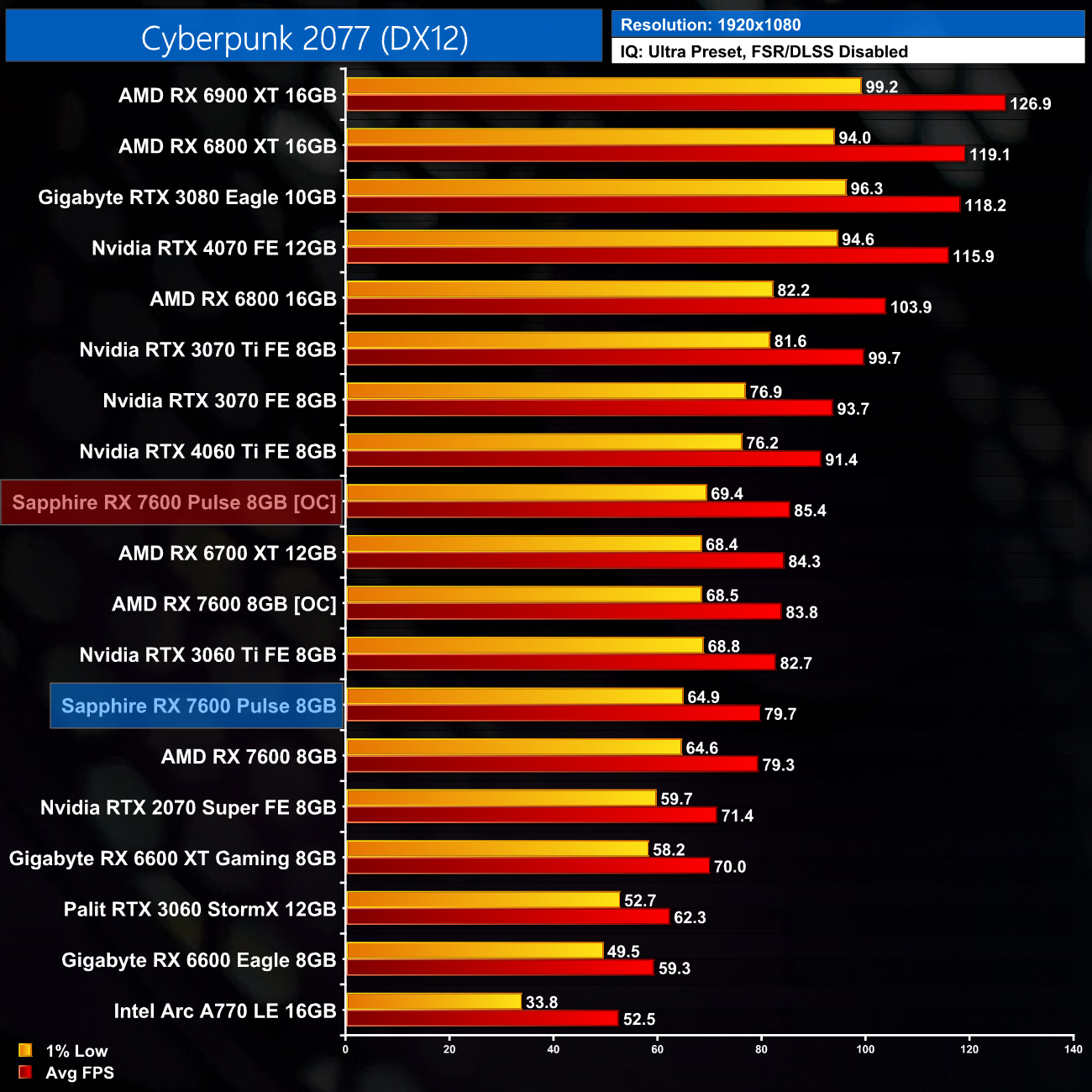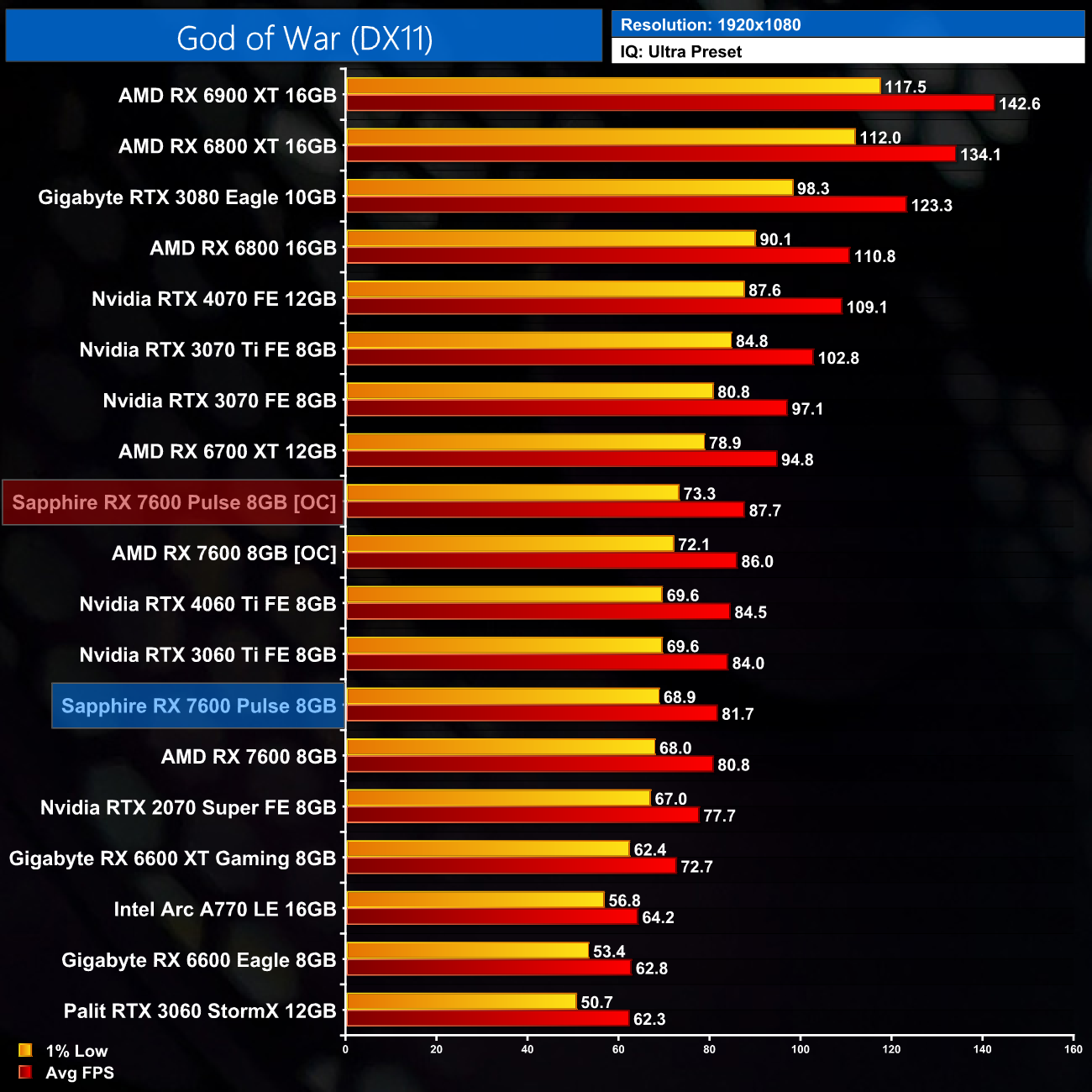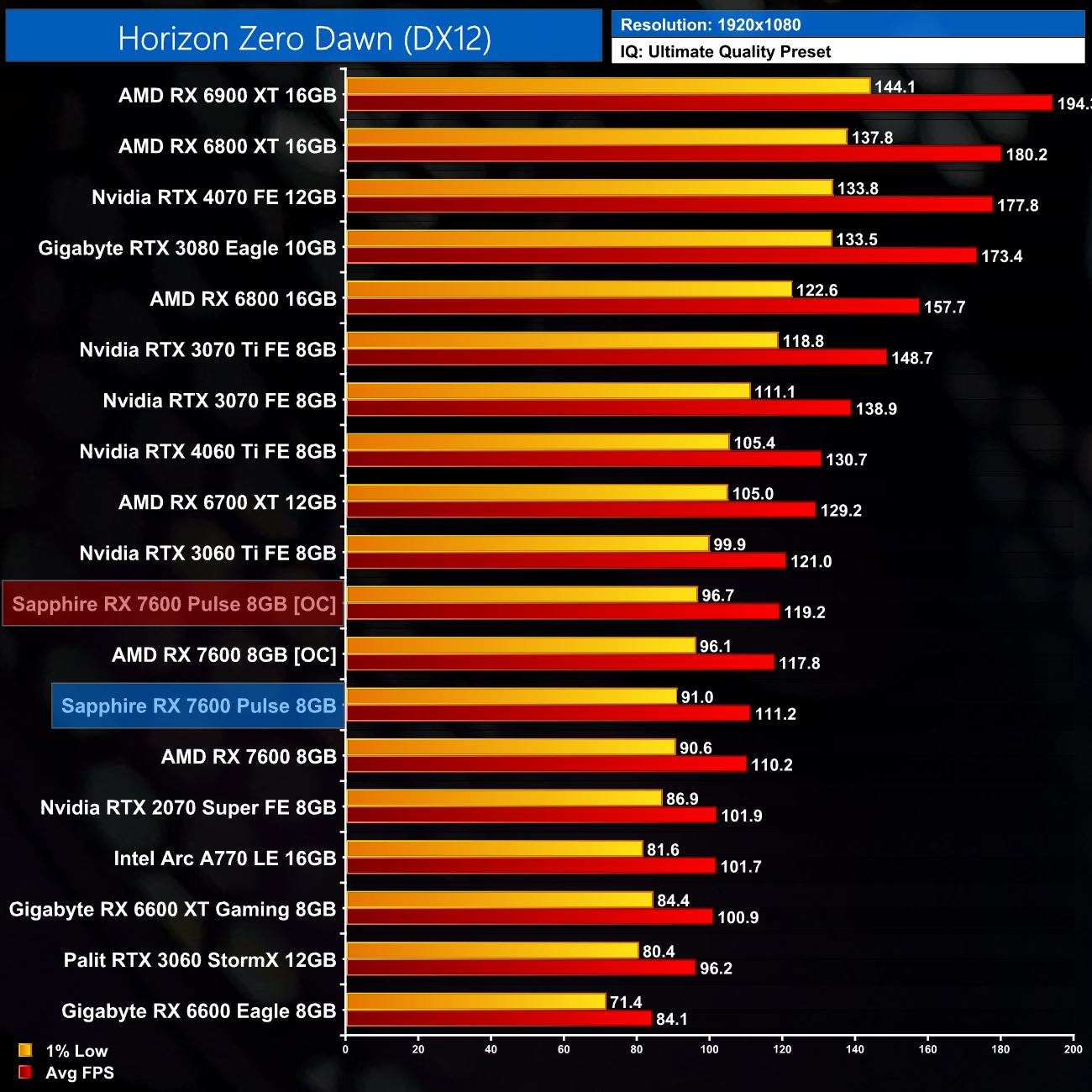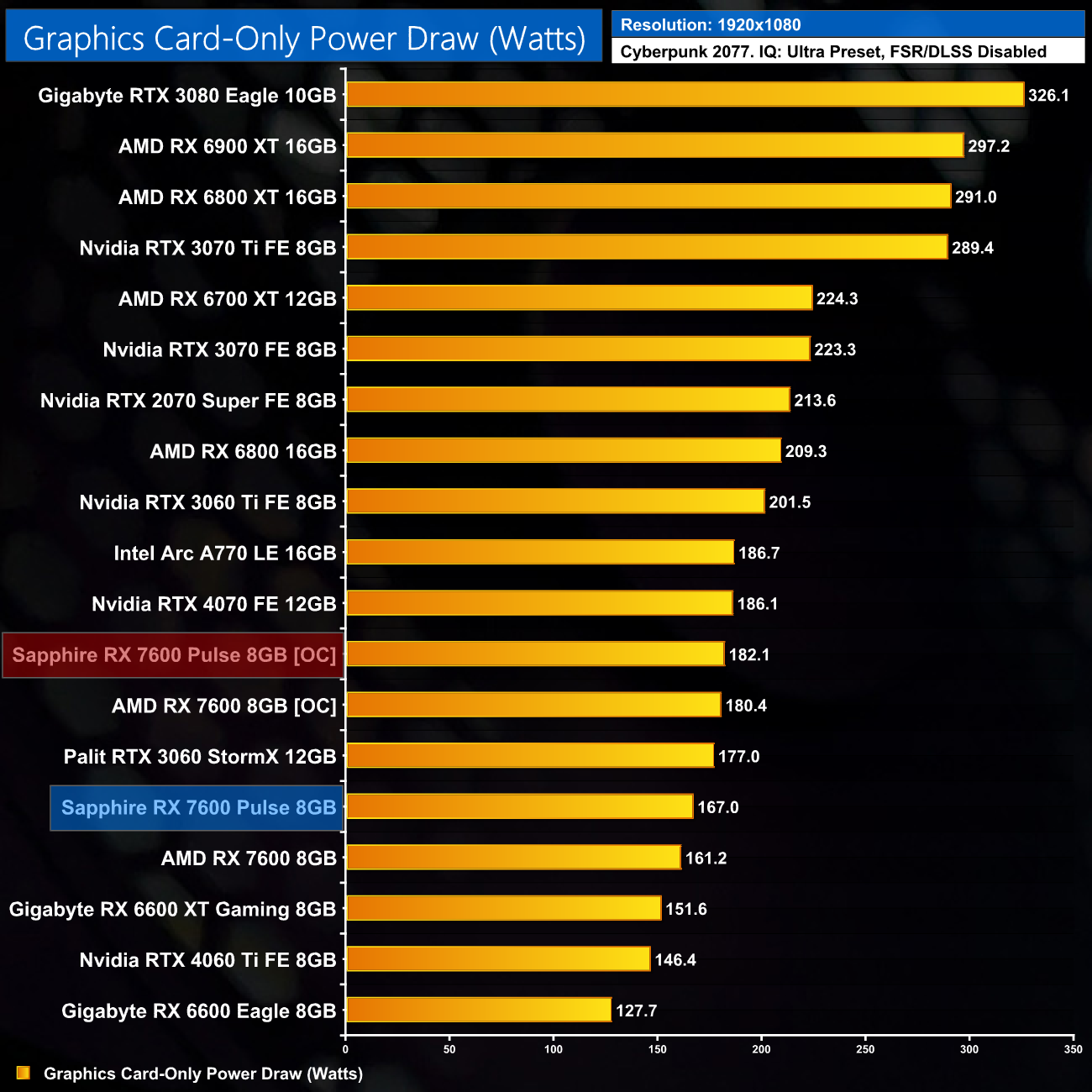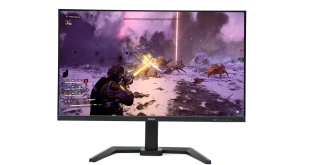For our manual overclocking tests, we used AMD's built-in tuning tool. Our best results are as below.
Overclocking the RX 7600 is very straightforward. Both the GPU and memory frequency sliders have a hard cap and can easily be maxed out at 3000MHz and 2400MHz, respectively. With the power slider maxed out as well at +12%, the only real thing that requires tweaking is the voltage slider, as the further you can undervolt the 7600, the higher it will clock in the real world.
In this case, I achieved stability with the Pulse at 1130mV, compared to 1140mV for the reference card. For those interested I was actually able to pass a 3DMark Time Spy stability test with the voltage as low as 1030mV, but games were simply not stable at such a low voltage.
This overclock saw our real-world frequency jump up to 2746MHz, so about a 110MHz improvement over stock.
In all three games we tested, this resulted in a performance improvement of 7%. It's hardly as game changer but it's about what we'd expect from a modern day GPU.
Power draw also increased as a result of the overclock, now coming in at 182W, so a 15W increase over stock (+9%).
Be sure to check out our sponsors store EKWB here
 KitGuru KitGuru.net – Tech News | Hardware News | Hardware Reviews | IOS | Mobile | Gaming | Graphics Cards
KitGuru KitGuru.net – Tech News | Hardware News | Hardware Reviews | IOS | Mobile | Gaming | Graphics Cards


